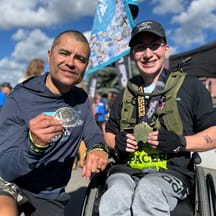Seven years ago, Stephen Lawless, M.D., MBA, professor emeritus of pediatrics, quality and safety at Nemours Children's Health System, created the Clinical Logistics Center. Modern Healthcare recognized Lawless in the magazine's inaugural class of Top 25 Innovators—selected for finding new ways to engage consumers, improve quality of care and lower costs. People who see the center describe it as something like a NASA control room.
It has an important mission— to analyze patient vital signs, follow test results and flag problems. In 2012, it opened with paramedics who monitor patients remotely. In 2016, staff applied monitoring data to reduce sepsis deaths. Those efforts produced a 35% improvement in sepsis response time rate and helped reduce pediatric sepsis from 2% to 0.05%. Lawless discussed with Children's Hospitals Today how staff at the Center developed the sepsis response tool that incorporates protocols to improve outcomes for sepsis patients. Lawless addresses progress at the Center and action to continue advancing care for kids.
What factors make the Clinical Logistics Center effective?
It works because we're using technology to guide—it doesn't rely on people to interpret the data and determine should we report or not. The default is to respond, don't question. From day one, our thought process was that paramedics were the best performance type for the Center, and they are still there seven-plus years later. Paramedics have the personality type where they like to follow rules, they like numbers and monitors, they follow a protocol, and they're not afraid to bring up an issue. Their job is to monitor and to alert. We're focused on coordinating the care inside the hospital to make it easier for people to do the right thing.
The Center has combined technology and clinical expertise. What's the next step for improved outcomes?
We're looking at how do we use more decision supports and pick up on things even faster. We're trying to get to zero errors by matching resources to the care of the child. Our next phase is to explore how do you instantaneously look at the resources available to the child's condition at the time. We will look at the intensity of the technology, for example, how many pumps do they need? How do you just-in-time match the resources to alleviate the nursing burden? If you alleviate the bur¬den, it's less likely errors will occur.
What does it mean to you to be named a Top 25 Innovator?
It was a shock. We've worked on it for so long, and I didn't expect it. When you have people come into the hospital system to see the Logistics Center and they get blown away by it or by the results, we take it for granted because we were on to the next thing already. The award was humbling, and I consider it a big honor.


